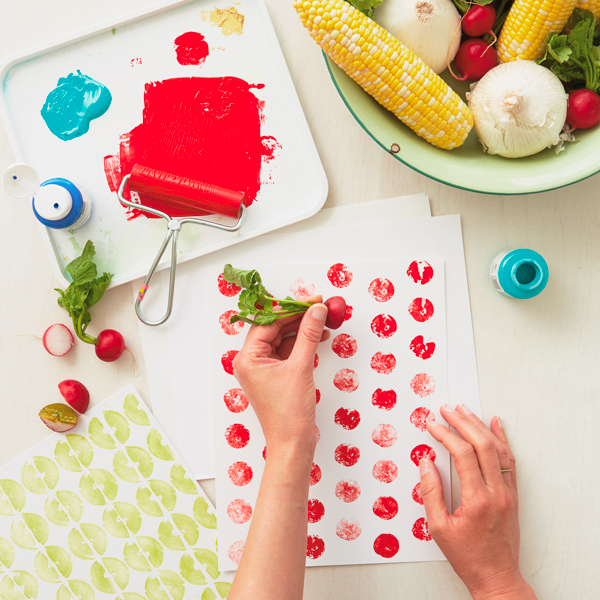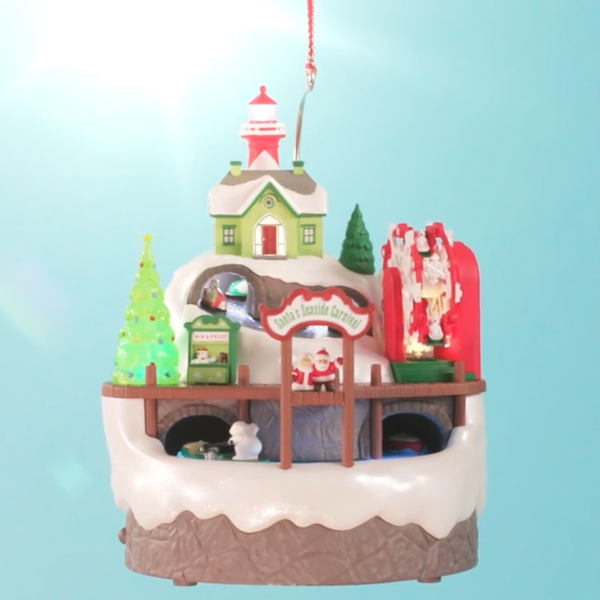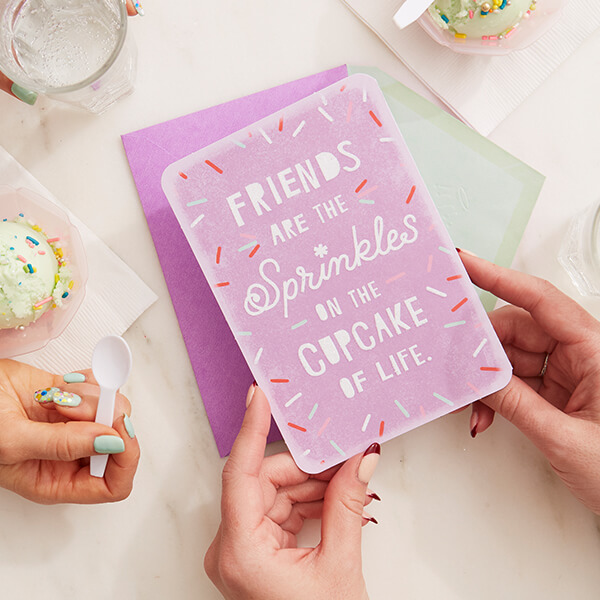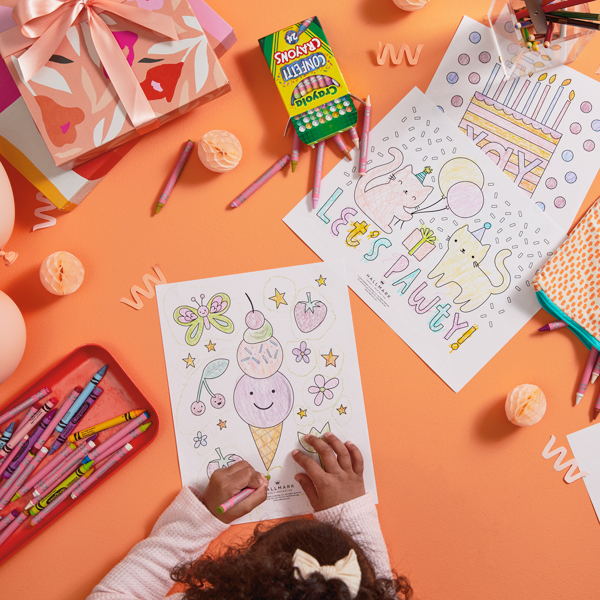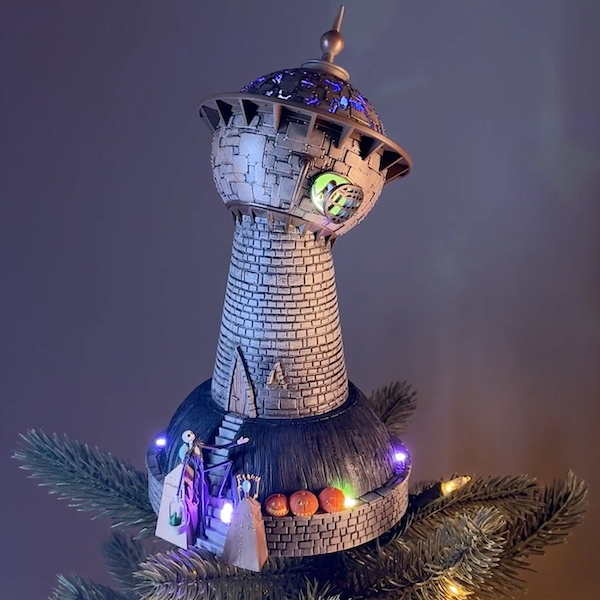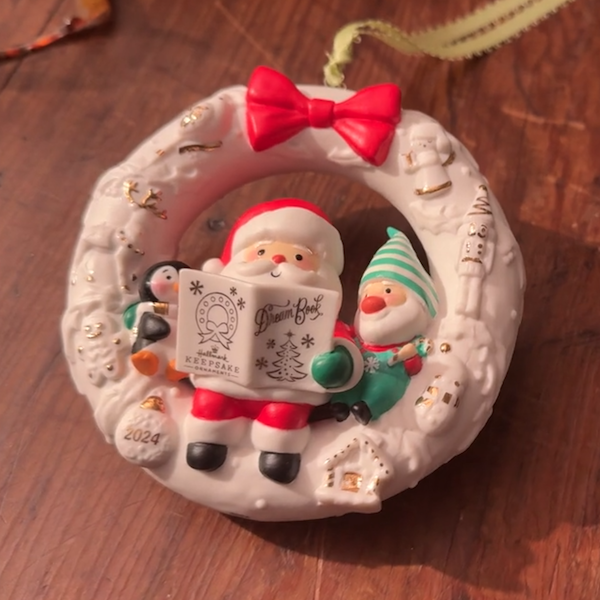Storytelling tips: how to tell a story

Once upon a time, there was a plucky mom who got really tired of reading Where the Wild Things Are over and over (and over, and over) to her child. All her life this mom had heard tales about the days of yore, when parents entertained their children using a magical power called “the imagination”—and completely without the help of Uncle TV and Aunty iPad. The plucky mom liked this idea a lot, but not knowing just where to start, she resigned herself to another reading of the same old book.
Does this story sound familiar? If you can see yourself in the role of the plucky mom, it’s time to dust off a part of your brain that you probably haven’t used in a while: your inner storyteller.
Inspired? Create and share by tagging @hallmarkstores.
The perfect story
Start off by trying to recall the stories you loved as a child. They can be things that really happened or that were totally made up. Then think about the stories your child is drawn to. The perfect stories for you and your child will be a mix of both.
Do you have an uncle who did something amazing? Imagine his experience and put it into words. Or maybe you prefer the classics like Goldilocks and the Three Bears. Try replacing the main characters with alligators or ninjas.
The secret here is that you don’t have to know where the story is going. Just launch into it: “Once upon a time, there was a dog named Bongo…” or “It was a dark and stormy night in Tupelo…” and see where it takes you.
Ham it up
“Any time a parent can use funny, quirky character voices, the more intently a child will listen,” says Julie Shaw, a former theater teacher. “It helps kids follow the story, listen better and enjoy the experience.” Try incorporating gestures and funny faces, too.
Ask for help
“When you get stuck on what comes next, let your child fill in the blanks,” recommends youth services librarian Meghann Henry. Having children add names and places keeps them engaged and helps them build stronger mental images. Besides, she says, “It takes the pressure off of you.”
Draw from life
Another way to make the story more fun is to add details your child can relate to. Maybe Goldilocks has an annoying little brother. Or maybe your main character thinks broccoli smells like stinky feet. Details from everyday life will make your child feel more involved in the story.
Telling stories gives both you and your child a creative outlet. It’s also a great way to create lasting memories together. But perhaps the best benefit of all is the possibility that, someday, a retelling of those memories will begin with the words, “Once upon a time, my mom told me a story…”
THE END
You may also like
See more-
Gifting The Office gifts and decor make WFH way more fun
From 9-5, our favorite show is The (Home) Office. 💼 📄 Add some fun to WFH with products and decor from The Office, av...
-
Summer Vegetable stamping: How to make simple, modern prints with produce
There are so many reasons to try fruit and vegetable stamping: It's surprisingly creative. It's easy. It uses stuff y...
-
Baby 40+ baby photoshoot ideas, tips and tricks from Hallmark photographers
You have the cutest baby in the world. There’s no contest. It’s not even a question. But what you might not have are ...
-
Christmas Step right up and see the Seaside Carnival Keepsake Ornament
Get ready for all the sights and sounds of Santa’s Seaside Carnival! Santa and Mrs. Claus are ready to greet visitors...
-
Friends Friendship messages: What to write in a friendship card
Whether it’s your friend’s birthday or just any old day, sending a card is a great way to bring a smile and nurture ...
-
Card Ideas 17 ideas for saving your favorite cards and letters
If you’ve got a shoe box full of old cards and letters, you’re definitely not alone. People have been stashing away m...
-
Birthday Free birthday coloring pages to add more fun to the celebration
The best birthdays are the ones filled with lots of little treats and fun activities, from sunup to sundown. If you’r...
-
Family Tips and ideas for preserving and displaying family recipes
Family recipes are a special kind of priceless heirloom—the kind that transport us back to our favorite times with ou...
-
Mother's Day Meaningful, personal Mother's Day gift ideas for every mom you know
It can be tough to come up with gift ideas for Mom. Most of us want to give her something meaningful: a gift that sho...
-
Father's Day Celebrating two dads on Father's Day: Tips and ideas inspired by real families
As a dad, I appreciate Father’s Day. Even though my family has never made a really big deal out of it, it’s always so...
-
Thank You 100+ teacher appreciation gift ideas to say “thanks for all you do!”
In 6th grade, my homeroom teacher made us illustrated, laminated bookmarks—each one a custom collage of our interests...
-
Christmas Dr. Finkelstein’s Lab Tree Topper
Fans of Disney Tim Burton’s The Nightmare Before Christmas, we have a frightfully fun new addition for your tree! Kee...
-
Graduation Graduation gift ideas for every level of education
My little brother starts kindergarten this year, and I’m already bracing myself for the tears—mine, not his. I know t...
-
Lifestyle Free printable When Calls the Heart Bingo card to celebrate the Season 11 premiere!
Who's ready for a Heartie Party? You know we are! So much so, we created a bingo card to add a whole extra layer of f...
-
Christmas Star Wars: A New Hope™️ Collection
You don’t have to travel to a galaxy far, far away to experience an epic adventure! Each stocking holder performs sce...
-
Christmas Wreath of Memories Keepsake Ornament
Get a special behind-the-scenes look at how Keepsake Artists Gregor Benedetti and Rob Stanphill collaborated on the d...
-
Christmas Howliday Helpers First in Series Keepsake Ornament
Do you want the inside scoop on an im-paws-ibly cute new series? We’ll throw you a bone—Keepsake Artist Sharon Visker...
-
Christmas Keepsake Ornaments ShowToppers Mini Collection
We’re so excited to introduce our new ShowToppers collection. Featuring three unique designs, each tree topper is int...
-
Christmas Keepsake Ornaments North Pole Village Table Decoration
Keepsake Artist Sharon Visker is here with a special delivery of Christmas magic! Hear how she brought this bustling ...
-
Christmas Harry Potter and the Chamber of Secrets™️ Storytellers Collection
Ready for a little magic? Featuring light, sound and real dialogue from the movie, Harry, Dobby, Ron, Hermione and th...


